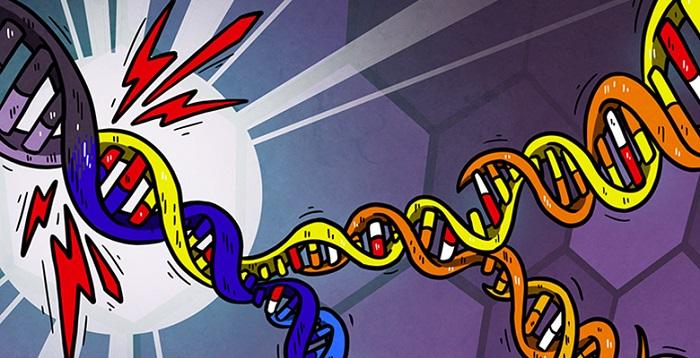Tobacco smoke, UV radiation, and certain chemicals are some of the factors that can damage the genetic material of cells, triggering cancer. These factors modify individual letters in the DNA code, called nucleotides. When a cell divides, some of these errors – or lesions – are resolved by a mechanism called DNA repair, but others remain unrepaired and become permanent changes in the DNA, known as mutations. This can result in health problems, such as cancer. Such mutational processes are extremely complex and there are still many unanswered questions about how they work.
A new study led by the University of Cambridge and the University of Edinburgh, and supported by EMBL-EBI, has examined the evolution of tumours in mice following chemical damage. The research, published in the journal Nature, shows that DNA lesions caused by chemical damage are not eliminated immediately, but are passed on unrepaired through several rounds of cell division.
Lesion segregation
The researchers also found that, during cell division, the two DNA strands – each with its own set of lesions and mutations, are separated into two daughter cells with different patterns of DNA changes. During further rounds of replication, the lesions repeatedly generate new combinations of mutations. This phenomenon, called lesion segregation, can result in extremely complex patterns of mutations in a tumour’s genome.
The researchers used the DNA-damaging chemical diethylnitrosamine to induce liver tumours in mice, and then analysed the tumour genomes.
“Persistent DNA lesions induced by chemotherapeutic agents segregate and produce several generations of further mutations. We need to be aware of this therapeutically, and in future drug development," says Martin Taylor from the University of Edinburgh’s MRC Human Genetics Unit.
A model for mutational processes
“These new insights into how mutational processes work are interesting and unexpected,” says Paul Flicek, Associate Director of EMBL-EBI Services. “The idea that DNA lesions are not resolved within a cell cycle and stay around for a long time is an important one. It shows that cells can evolve faster than the machinery can fix them and this has implications for how we think about cancer.”
Image: Artist's impression of DNA lesions. Credit: Petra Korlevic
Find out more about the study:
Source articles
AITKEN, S.J., et al. (2020). Pervasive legion segregation shapes cancer genome evolution. Nature. Published online 24 06; DOI: 10.1038/s41586-020-2435-1
Funding
This project was supported by a strategic sequencing award and Institutional core funding from Cancer Research UK, as well as grants from the European Research Council, UKRI/Medical Research Council, and Wellcome.
